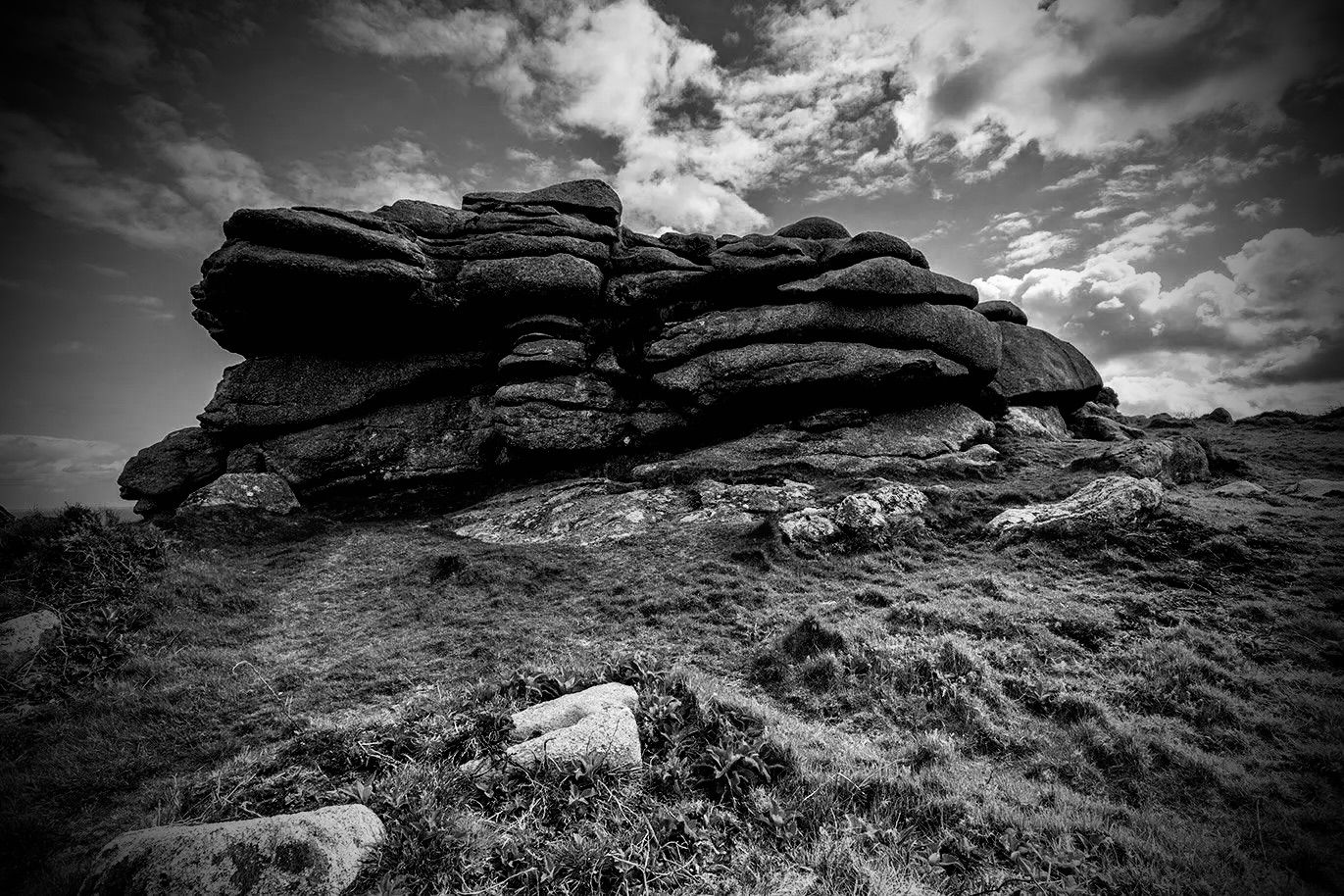top of page
Dive into the rich landscapes that shaped Cornwall’s folklore. From ancient sites steeped in mystery to dramatic coastlines whispered about in legends, our locations map brings these stories to life, connecting you to the heart of Cornwall’s enchanted past.



The Giants of Trencrom/Torcrobm Hill
Trencrom Hill rises majestically from the wooded lands of Trevetha’s park, near Lelant, Cornwall—a place where the boundary between history and myth is blurred, and the very air hums with ancient power. Known once as “Torcrobm,” derived from the Cornish “torr crobm,” meaning “hunched bulge,” Trencrom is a land shaped by giants, where the landscape tells stories of those who walked before. The hill features a Neolithic tor enclosure, later adapted into an Iron Age fort, with cairns and hut circles scattered across its summit, remnants of a time when it was a place of power and refuge. Managed by the National Trust since 1946, Trencrom spans 63.18 acres and now serves as a memorial to the Cornish men and women who died in the two World Wars. Yet the hill’s true essence is timeless—its stone-touched heart pulses with the weight of centuries, echoing tales of long-lost civilizations, of warriors and sorcerers, of giants who roamed this land before the first plough turned the earth.
From Trencrom’s summit, the view unfolds like an ancient scroll, with the southern coastline spreading out beneath a sky that seems too vast to hold. The land dips and rises gently, guiding the eye towards Mount’s Bay, where the iconic St Michael’s Mount looms like a sentinel—an enigmatic fusion of church, castle, and modern dwelling, its silhouette framed by the fertile lands of Marazion and Penzance. The bay stretches wide, embracing the peninsulas to the east and west, which reach out like arms towards Lizard Point and Mousehole, while the serene fishing villages of Newlyn and Mousehole nestle in the arms of the western hills. The surrounding landscape reveals a quiet beauty, with mining towns like Camborne and Redruth dotting the hills and valleys. From Trencrom, you can glimpse the towering granite formations of Cam Brea and the mineral-rich hills of Godolphin, areas once teeming with miners, now left with the vestiges of their industrial past, like ghosts still whispering in the wind. To the east, the jagged granite peaks of Roughtor and Brown Willy—Cornwall’s highest hills—stand watch, their weathered forms speaking of ancient times when the land was ruled by stone and shadow.
The very earth beneath Trencrom’s slopes is imbued with legends, and none more so than the tale of the giants who once called these hills their home. The giants, fierce and brutish, left a legacy of stone walls and ancient barrows, and though they are gone, their spirits still linger in the windswept moors. They built massive hedge walls using the great granite boulders scattered across the land, and in the earth between, they planted oaks and elms, hazel and hawthorn, creating wild, untamed landscapes that still thrive today. One of these giants, young Tom, became the stuff of legend. Standing at a mere eight feet tall, Tom was a giant who enjoyed his laziness as much as his appetite—two pasties for lunch, three for tea, and none for work. His mother, ever frustrated by his idleness, would often try to prod him into action, but Tom’s true strength was not just in his size—it was in his ability to find his own path and to fight for what was right, even when it meant facing off against the mightiest of foes.
Tom’s greatest adventure unfolded when he crossed paths with Blunder, an old, fearsome giant who had taken to blocking the roads and terrorizing the local land. One day, while driving an ox cart loaded with beer from Penzance to St Ives, Tom encountered six men struggling to move a fallen tree. With a casual wave of his hand, he lifted the trunk and cleared the path, much to the amazement of the men. But Blunder, angered by Tom’s impudence, saw this as a challenge to his authority and ordered him to leave. Undeterred, Tom marched his ox cart straight through Blunder’s land, opening the gates to the giant’s fortress and walking right in. A battle of wits and strength ensued, with Blunder wielding an enormous elm branch and Tom, unfazed, using the wheel and axle from his cart as his sword and shield. The duel was fierce, but fair—Tom played by the rules, and when Blunder fell, mortally wounded, Tom honored the ancient giant with a burial at Wheal Reeth, near Trencrom Hill. Before his death, Blunder, with surprising humility, offered Tom all his riches—gold, silver, and the lands he had once ruled—asking only that Tom give him a proper burial. Tom did so, and from that day on, the treasures of Blunder’s kingdom were said to be hidden beneath the hills of Cornwall, protected by the mythical Spriggans who guarded them jealously.
The story of Tom, the young giant, didn’t end with Blunder’s death. Tom went on to have many more adventures, some with his wife Joan and others with his friend Jack, all while managing the vast wealth and land left to him by Blunder. The riches were said to be passed down through the generations, with some of it still whispered to be hidden in the pockets of Cornish families like the Trewellas, Trewarthas, and Tregarthens. Trencrom Hill, where the giants once trod, remains a living monument to their memory—an enduring symbol of the land’s mystical history, where the echoes of ancient battles, buried treasures, and timeless legends can still be felt beneath the earth. The wind that sweeps across the hilltop carries with it the stories of giants, while the stones and cairns speak in hushed tones, telling tales of a Cornwall where magic and myth walk hand in hand with the rugged beauty of the land.
bottom of page